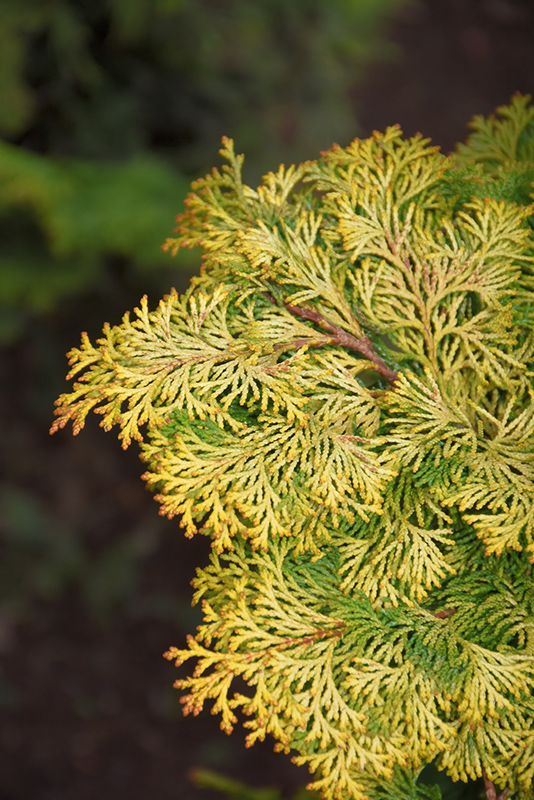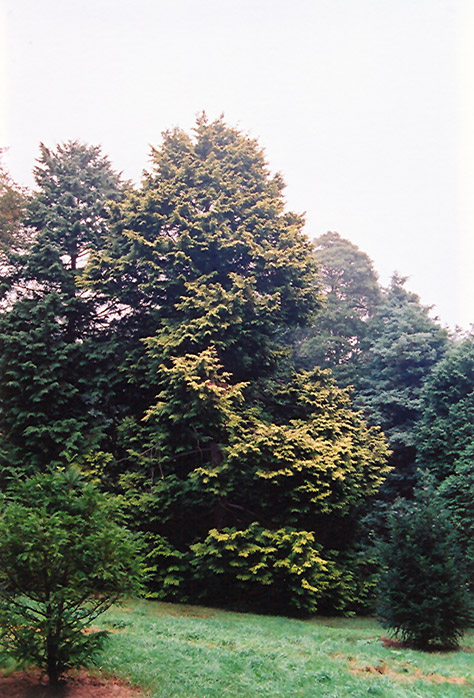>> Home
Golden Hinoki Falsecypress
Chamaecyparis obtusa 'Aurea'
Height: 50 feet
Spread: 20 feet
Sunlight:
![]()
![]()
Hardiness Zone: 6
Description:
A tall, broadly pyramidal evergreen tree with a showy golden hue all season long, great for color contrast or as an accent in the home landscape; will grow quite large, best for larger landscapes, and achieves best performance in humid conditions
Ornamental Features
Golden Hinoki Falsecypress is primarily valued in the landscape for its distinctively pyramidal habit of growth. It has attractive yellow evergreen foliage which emerges gold in spring. The scale-like sprays of foliage are highly ornamental and turn coppery-bronze in the fall, which persists throughout the winter. The shaggy antique red bark adds an interesting dimension to the landscape.
Landscape Attributes
Golden Hinoki Falsecypress is an evergreen tree with a strong central leader and a distinctive and refined pyramidal form. Its average texture blends into the landscape, but can be balanced by one or two finer or coarser trees or shrubs for an effective composition.
This is a relatively low maintenance tree. When pruning is necessary, it is recommended to only trim back the new growth of the current season, other than to remove any dieback. It has no significant negative characteristics.
Golden Hinoki Falsecypress is recommended for the following landscape applications;
- Accent
- Vertical Accent
Planting & Growing
Golden Hinoki Falsecypress will grow to be about 50 feet tall at maturity, with a spread of 20 feet. It has a low canopy with a typical clearance of 4 feet from the ground, and should not be planted underneath power lines. It grows at a medium rate, and under ideal conditions can be expected to live for 70 years or more.
This tree does best in full sun to partial shade. It prefers to grow in average to moist conditions, and shouldn't be allowed to dry out. It is not particular as to soil type or pH. It is highly tolerant of urban pollution and will even thrive in inner city environments, and will benefit from being planted in a relatively sheltered location. Consider applying a thick mulch around the root zone in winter to protect it in exposed locations or colder microclimates. This is a selected variety of a species not originally from North America.

